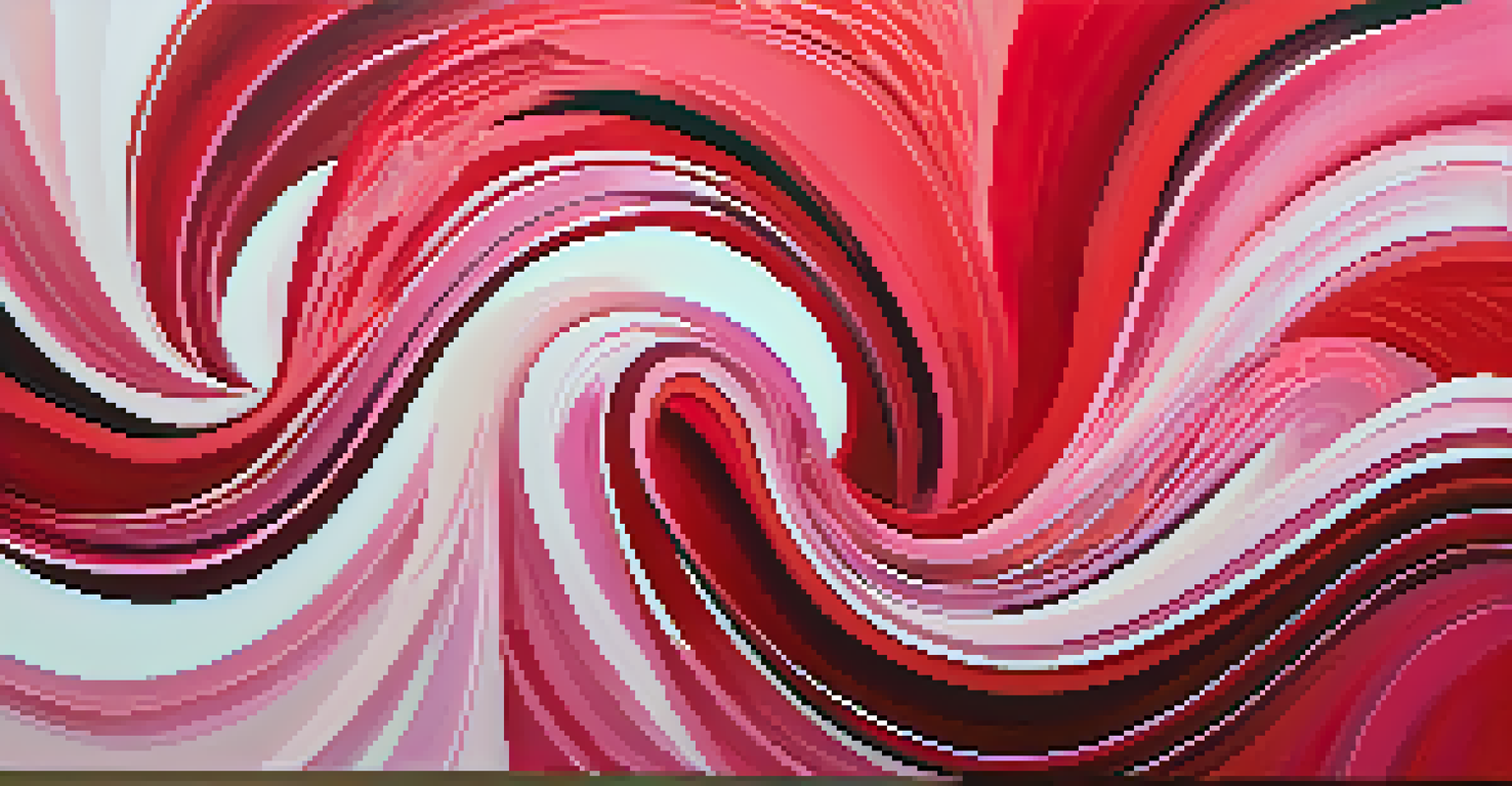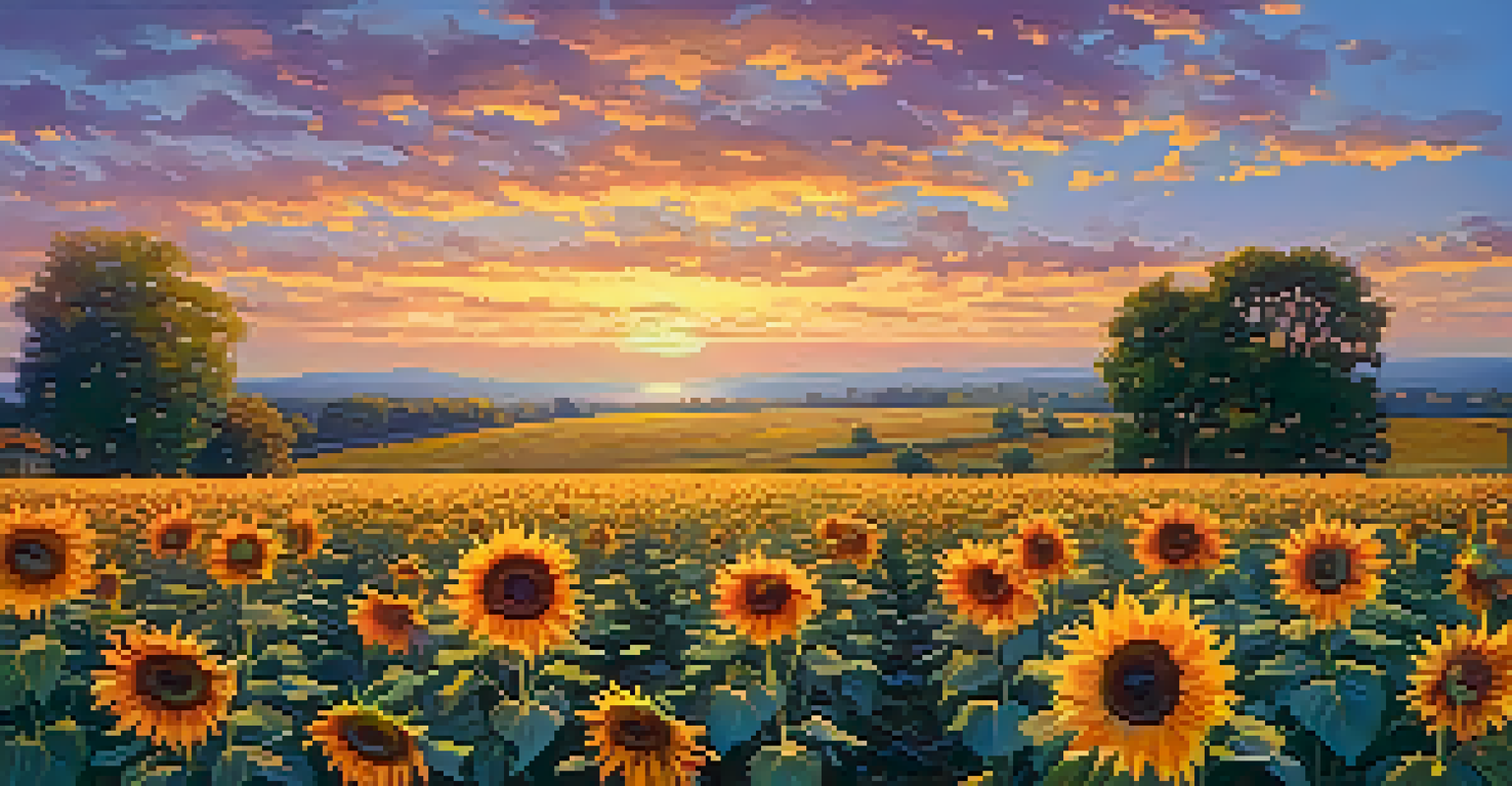Cultural Interpretations of Color in Artistic Expression

Understanding Color Psychology in Different Cultures
Color psychology is the study of how colors affect human behavior and emotions. Different cultures attribute unique meanings to colors, which can drastically influence artistic expression. For instance, while white is often seen as pure and innocent in Western cultures, it represents mourning in many Eastern cultures.
Color is the keyboard, the eyes are the harmonies, the soul is the piano with many strings.
This contrast illustrates how deeply rooted cultural beliefs shape our perceptions of color. Artists often draw upon these meanings to convey specific messages or evoke certain feelings in their work. Understanding these cultural interpretations can enrich our appreciation of art.
By recognizing the psychological impact of color, we can better understand why artists choose specific hues. This knowledge can also enhance our own experiences with art, as we become more aware of the emotions and ideas that colors can represent.
The Symbolism of Red Across Cultures
Red is a color that carries a spectrum of meanings worldwide. In many Western cultures, it often signifies love and passion, as seen in red roses on Valentine’s Day. Conversely, in China, red symbolizes good fortune and joy, making it a popular choice for weddings and celebrations.

This duality of red showcases how cultural contexts can shift the interpretation of a single color. Artists leverage this variety by using red to communicate different themes, whether it’s passion in one piece or celebration in another. Understanding these symbolic meanings helps viewers appreciate the artist's intent more fully.
Cultural Meanings Shape Color Perception
Different cultures attribute unique meanings to colors, influencing artistic expression and emotional responses.
Moreover, the use of red can evoke strong emotional responses in audiences. Whether it sparks feelings of love or excitement, the cultural significance of red adds layers of depth to artistic expression.
The Calming Effect of Blue in Artistic Traditions
Blue is often associated with calmness and serenity, a sentiment echoed across many cultures. In Western art, blue hues are frequently used to depict tranquility, as seen in works like Monet's water lilies. Meanwhile, in Middle Eastern cultures, blue can symbolize protection and safety, often represented in architecture and textiles.
Colors are the smiles of nature.
This calming effect is not just aesthetic; it can also influence the viewer's emotional state. Artists harness this soothing quality to create spaces that invite reflection and peace. By choosing blue, artists can evoke a sense of comfort and stability in their work.
The universal appeal of blue highlights how color can transcend cultural boundaries. It serves as a reminder of our shared human experiences, allowing art to connect people from diverse backgrounds.
Green: Nature's Color and Its Cultural Significance
Green, the color of nature, holds various meanings across cultures. In many Western societies, it represents growth, renewal, and harmony, often associated with environmental movements and sustainability. In contrast, in some African cultures, green can symbolize fertility and prosperity, showcasing the land’s bounty.
Artists utilize green to communicate themes of life and rejuvenation. By incorporating this color into their work, they can evoke feelings of hope and connection to the natural world. This interplay between color and meaning reflects the artist's relationship with their cultural environment.
Color Choices Reflect Identity
Modern artists often incorporate culturally significant colors into their work to express their heritage and perspectives.
The versatility of green demonstrates how cultural interpretations can enrich artistic expression. It reminds us that nature is a shared experience that transcends individual cultures, allowing for a collective appreciation of its beauty.
The Role of Yellow in Cultural Artistry
Yellow is a vibrant color that often evokes feelings of happiness and optimism. In many Western cultures, it is linked to sunshine and joy, which is why it frequently appears in cheerful artworks. However, in some Asian cultures, yellow can signify courage and royalty, illustrating a more complex interpretation.
Artists often use yellow to attract attention and convey a sense of liveliness. Its bright and bold nature makes it a popular choice for works meant to inspire or uplift viewers. By understanding the different meanings behind yellow, we can appreciate the artist's choice of color more deeply.
Moreover, yellow can serve as a powerful tool in storytelling within art. It can highlight important elements in a piece or evoke specific emotions, allowing the viewer to engage more fully with the narrative being presented.
Black and White: Contrasting Views in Artistic Expression
Black and white are often seen as opposites, yet they hold significant cultural meanings. In many Western societies, black is associated with mourning and loss, while white represents purity and new beginnings. In contrast, some African cultures view black as a symbol of maturity and wisdom, challenging the conventional interpretations.
Artists frequently utilize the interplay of black and white to create dramatic contrasts and highlight essential themes. This use of stark colors can evoke powerful emotions and draw attention to specific elements within the artwork. Understanding these contrasts helps viewers appreciate the complexity of the artist's message.
Color Enhances Art Appreciation
Understanding the cultural significance of colors enriches our experience of art and deepens our connection to the artist's intent.
The duality of black and white not only enriches artistic expression but also invites viewers to reflect on their own cultural beliefs. By engaging with these contrasting interpretations, we can gain a more profound understanding of the artwork and its impact.
Cultural Influences on Color Choices in Modern Art
In contemporary art, cultural influences play a significant role in color selection. Artists today often draw from their heritage, incorporating culturally significant colors into their work. This practice allows them to express their identity and communicate their unique perspectives through color.
Moreover, globalization has led to a blending of cultural color interpretations, creating new meanings and associations. Artists can now experiment with colors that might have different significance in various parts of the world, enriching their creative processes. This fusion of influences can lead to innovative and thought-provoking artwork.

As viewers, recognizing these cultural influences in modern art can enhance our understanding of the piece. It encourages us to explore the artist's background and the messages they aim to convey through their color choices.
Conclusion: The Power of Color in Cultural Artistic Expression
Color is a powerful tool in artistic expression, deeply intertwined with cultural interpretations. From the soothing qualities of blue to the vibrant energy of yellow, each color carries unique meanings that resonate across different cultures. Understanding these interpretations enriches our experience of art and fosters a deeper connection with the artist's intent.
As we explore the cultural significance of color, we become more aware of how our backgrounds shape our perceptions. This awareness encourages us to approach art with an open mind, appreciating the many layers of meaning that colors can convey.
Ultimately, the study of color in cultural artistry reminds us of the shared human experience. It highlights the beauty of diversity while celebrating the common threads that bind us through creativity and expression.